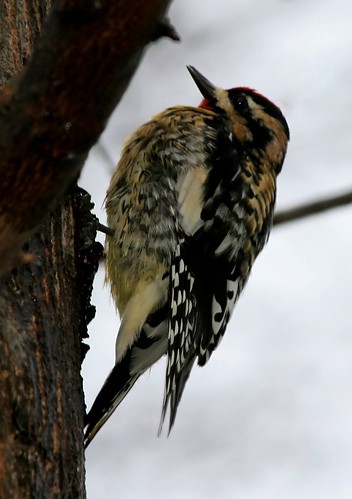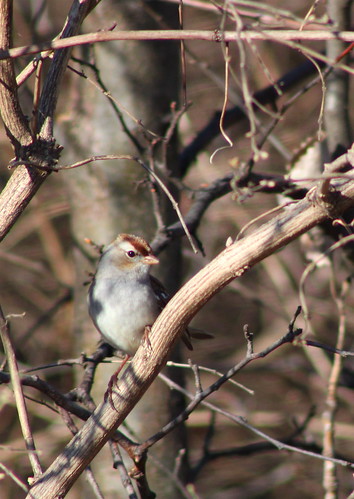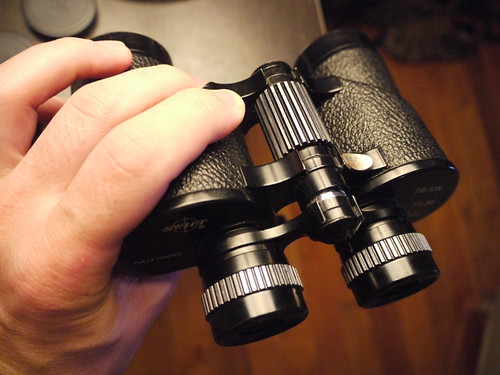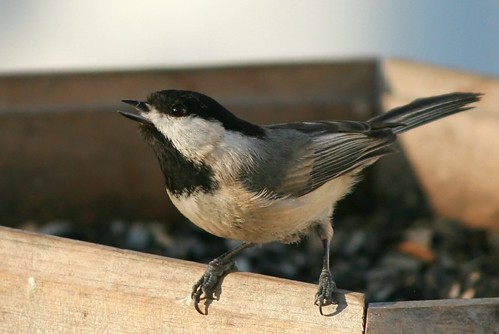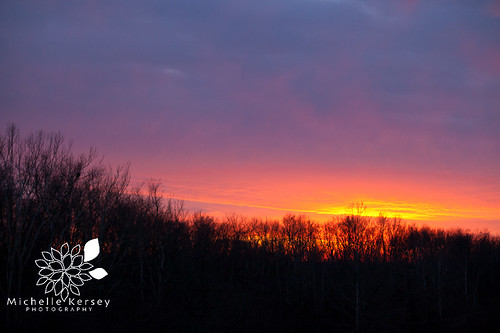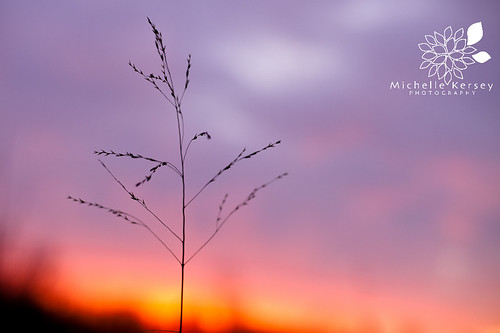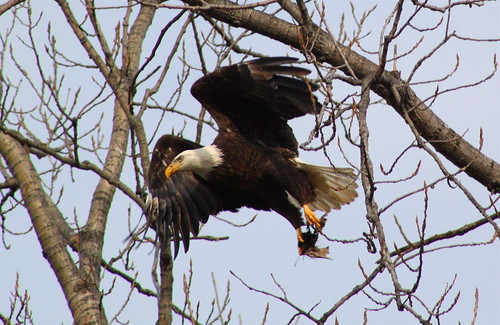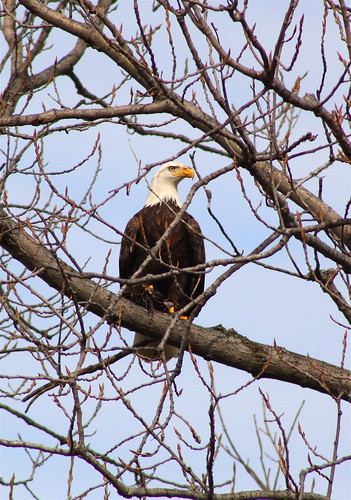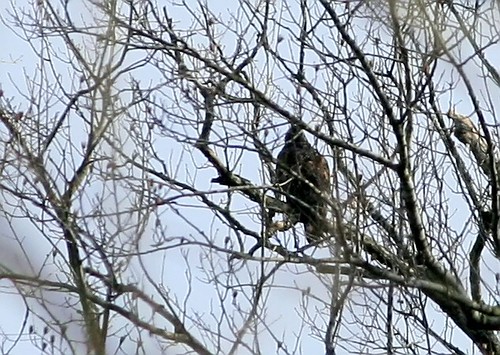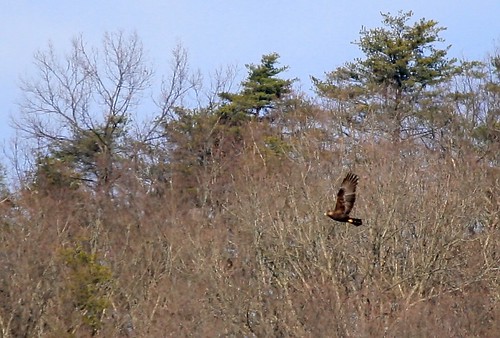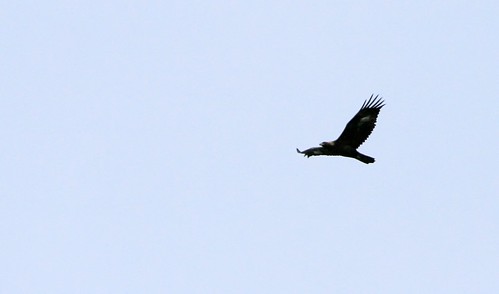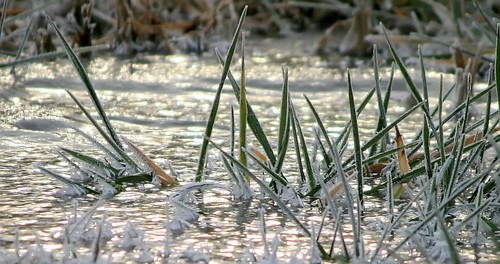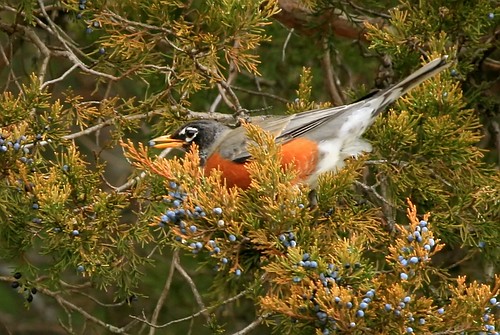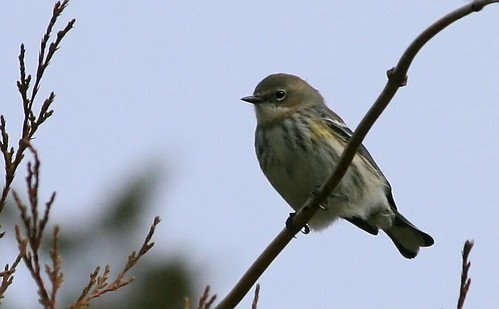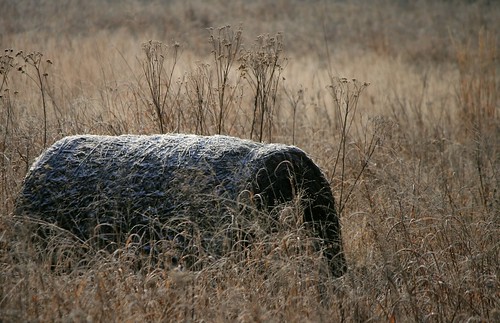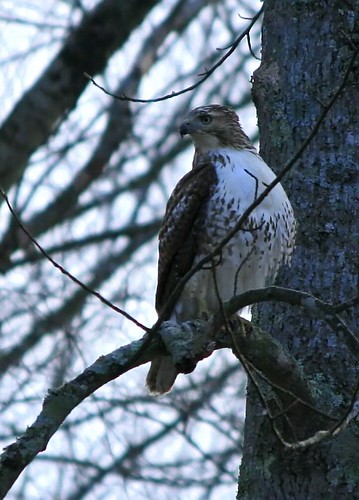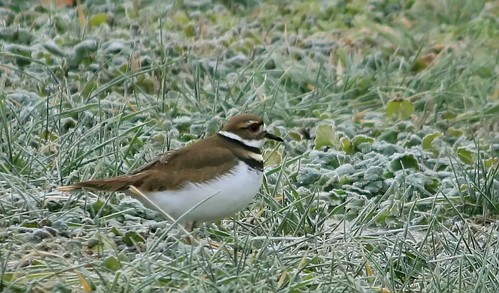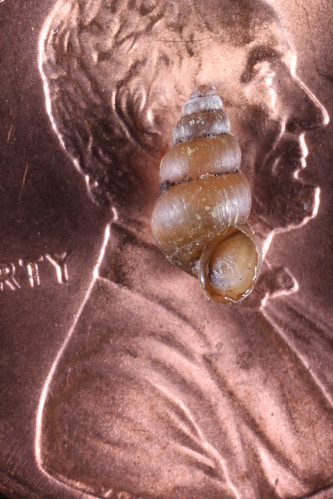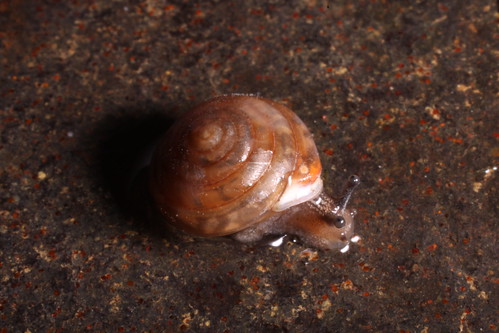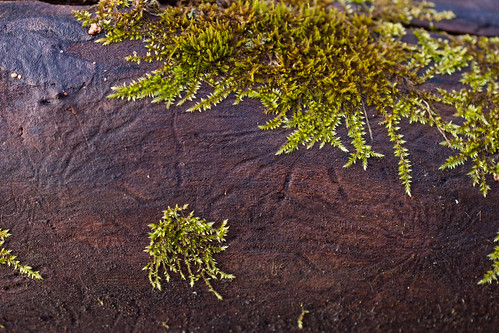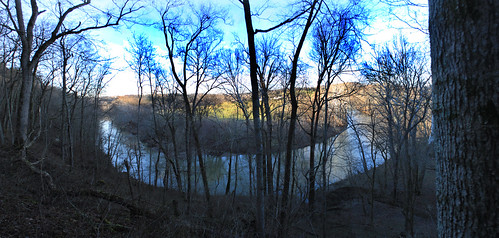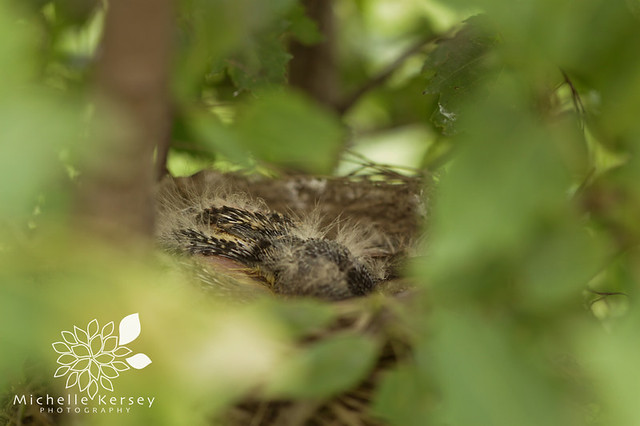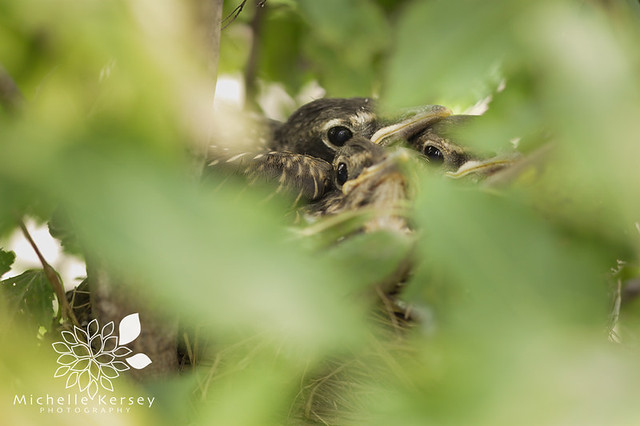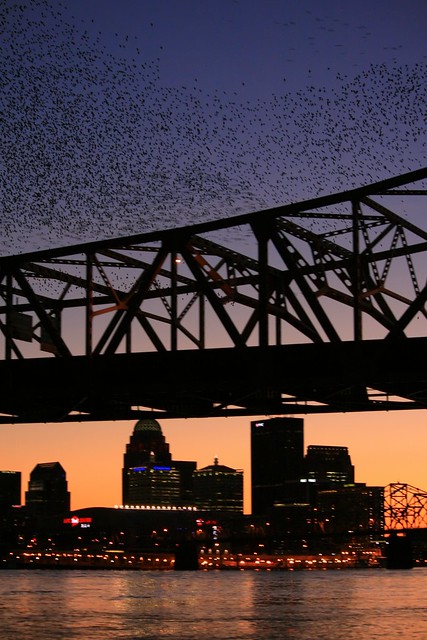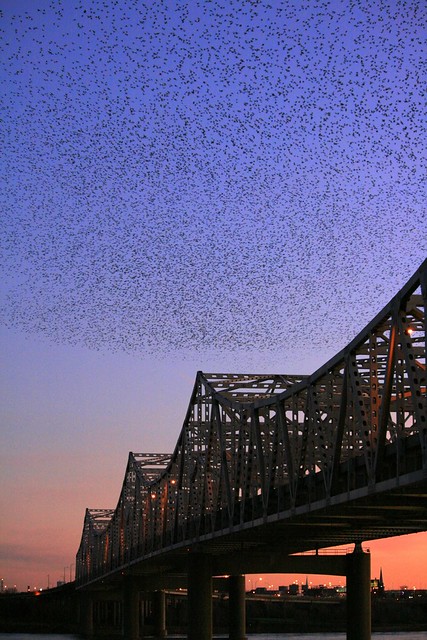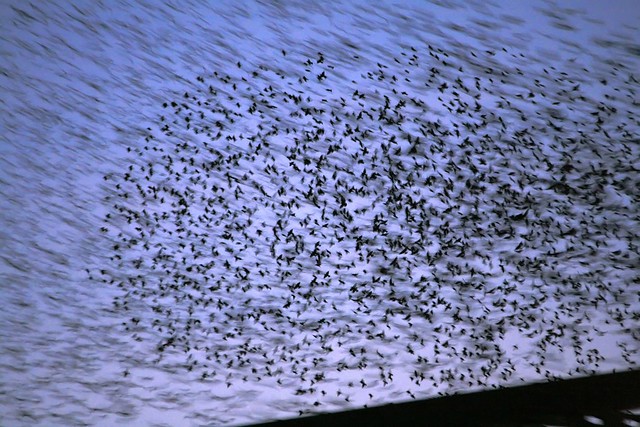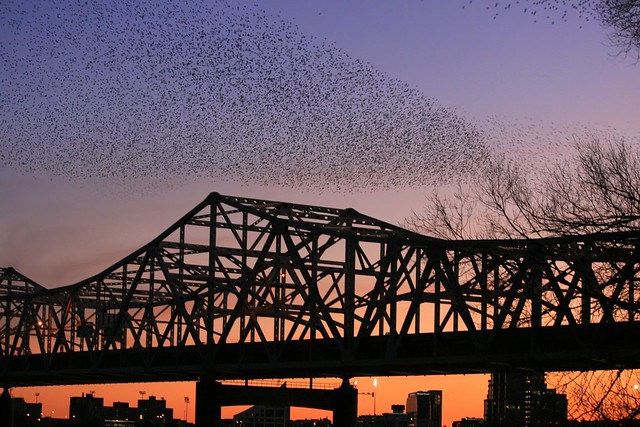Have you ever seen somebody with binoculars standing motionless, staring a tree, making weird noises with their mouth, and then suddenly erupting into jubilee for no apparent reason? Chances are you have just seen a birder pishing out and ticking off a life-bird. Wait, what does all that mean? Pishing? Ticking? Life bird? You may think this all sounds strange, but soon you too will be feeling the itch to twitch - as our British friends call birding. Starting out birding can be a daunting task. There are hundreds of birds in North America, all of them present at different times of the year, and some very similar in appearance and sound. Not many birds make themselves readily visible and one may get just a fleeting glance before the bird disappears. How is one ever supposed to get started birding when there is such a steep learning curve involved? Never fear, birding 101 is here. I will walk you through what you will need to start birding, what birds you are most likely to see, and some tips and tricks along the way. Let's get started.
Introduction to Birdwatching
Birdwatching as a hobby began in America and Great Britain around the end of the 19th century and increased in popularity in the 1930's with the advent of binoculars and field guides. Today it is exploding in popularity, surpassing hunting, fishing, and even golf as America's favorite pastime. There are all types of birders; from backyard birders that watch their bird feeders to fanatics willing to go the the ends of the Earth to see a rare bird. Even with the rapid growth in popularity, there are still many of Americans just like you, interested in taking the first steps to becoming birdwatchers.
Equipment
There are many must-haves if you are considering taking up birding. The first is a good pair of binoculars. Binoculars allow you to see distant birds up close and help with identifying difficult birds. The best binoculars to use for birding are 7x35 or 8x42 binoculars. The first number relates to the magnification of the binoculars and the second number is the objective diameter, or the amount of light the binoculars let in. These two sizes give you a good magnification and depth of field for spotting and following quick small birds. A great place to buy binoculars is
Eagle Optics, though I highly recommend finding a local store to try out several types and see which suit you best.
Another important tool you should have every time you go birding is a field guide. Field guides come in many forms, though most use paintings (some use pictures) that depict the various types of birds you are likely to encounter. Field guides show field marks, ranges, and other notes that make identification of birds easier. Your best bet is to buy a field guide for your geographical region, for example
Sibley's Field Guide to Eastern Birds if you live in Kentucky. There are many field guides to choose from, like:
Peterson's,
National Geographic, and
Stokes.
Lastly, it is wise to consult a checklist for birds that may be present in your area. Having a checklist may help you narrow down difficult birds in your area. Not all of the birds in your field guide will be present in your area, so it is smart to have a check list to weed out the birds that are not. A great resource in Kentucky is the
Kentucky Ornithological Society checklist and the BirdKY list serv, where local birders post their findings online. Follow the BirdKY list serv to see what birds are being seen when and this too will help you know which birds are present in your area and at what time of year. Also, join a local organization where more experienced birders would be happy to help you learn. In Louisville, check out the
Louisville Audubon Society or the
Beckham Bird Club for field trips and informative talks.
Where to Find Birds
Perhaps the hardest part in starting your bird watching endeavor is finding the birds themselves. The best way to start honing your bird identification skills is to set up a bird feeder in your back yard and identifying the birds that come in for the free buffet. This brings the birds to you, giving you long uninterrupted views and more time to identify the birds. In order to bring in the most birds it is best to use a variety of feeders. The best and simplest method is using a
tube feeder to attract the widest variety of birds. Fill your feeder with black oil sunflower seed or one of Louisville Audubon Society's
seed mixes to bring in cardinals, chickadees, and titmice. Next hang a
thistle feeder to bring in the finches. And don't forget a
suet feeder for the woodpeckers and nuthatches. It may take a couple days for the birds to find your feeders so be patient. Check out the second
Birding 101 post focused on feeding your backyard birds.
So you've been scouting your feeders and you're feeling pretty confident about your bird identification skills, now it's time to see what you're really made of and hit the woods and fields. The first place to go is a local park. Choose a park that has trails that go through woods and fields so you can find a variety of birds. Start early in the morning because the birds are more active at the beginning of the day. Walk slowly and quietly and be on the lookout for movement and listen for bird chirps and songs. Seek out edges where one habitat blends into another. Birds are attracted to edges because of the variety of foods available and you should make a point to check them out for this reason.
Bird Identification
With binoculars in one hand and your trusty field guide in the other, you set out on a trail in search of birds. You hear some chirps coming from the bushes and you search for the bird making the noise. A small bird pops up from the underbrush and perches high up on a branch in clear view! You put your binoculars on the bird and focus, and then comes the hard part. Just what bird is it? Making a positive identification can be difficult when you are first beginning, but here are some tips to help you decide which bird you are looking at.
First things first, keep your eye on the bird for as long as it stays in view. Do not attempt to consult your field guide until the bird has left your view. All the while you are looking at it, make mental notes, sketch a mental image of the bird and then when it has left, search your field guide for a match. Here are some things to pay attention to when trying to identify a bird:
- Size - Is is the size of a sparrow, robin, crow, or hawk? Size will help you separate different groups of birds and will narrow down your search.
- Bill shape - What type of bill does the bird have? Is it large and strong like a cardinal? Or slender like a warbler? Woodpeckers have long, straight bills for hammering into trees, whereas hawks have curved, toothed bills for tearing meat. A bird's beak says a lot about what it eats and is a great characteristic to use when identifying birds.
- Color - Color isn't as much help in identifying birds as you might first think, but it definitely will help you narrow down your search. Many birds of all types have yellow on their body somewhere, but a bird with blue plumage will be easier to identify because only a few species of birds are this color. Pay attention to the color on a bird's belly, back, and head to separate similarly colored birds.
- Behavior - Some birds exhibit unique behaviors such as tail-bobbing or walking instead of hopping. Make note whether the bird is traveling in a flock or is solitary. How is the bird flying? Does it glide or does flap vigorously? How was it foraging for food? Was it scratching through leaves on the ground or was it searching for berries on a bush?
- Field Marks - Field marks are unique identifiers for a species or group of birds. For instance, most woodpeckers have a red patch on the back of the head. Some birds like the Cedar Waxwing and Eastern Kingbird have terminal tail bands that set them apart from all other birds. Also look for eye-rings, wing bars, and eye stripes. Your field guide will help guide you through the different species and their unique identifying characteristics.
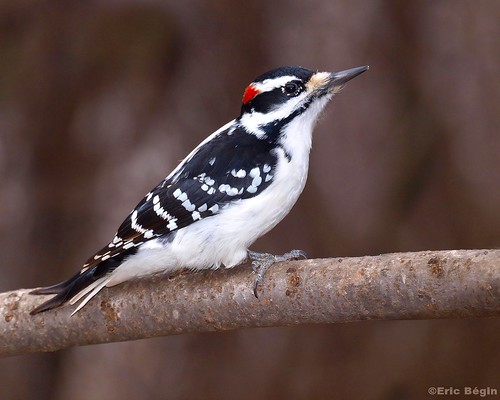
While some birds may frequent several different types of habitat, especially during migration, most birds will be found in only one type of habitat. There are many types of habitats but only a few are present in the Louisville area. Louisville predominately is made up of either woodlands or old fields, with some wetlands too. Depending on which habitat you are in, you can narrow the types of birds that will be seen in that specific habitat. For instance, you will only ever find a meadowlark in a field and you will only see a woodpecker in a forest. This is because birds have adapted to the type of habitat they forage for food and breed in.
Many parks in the Louisville area have woodland trails great for birding. For starters, try
Jefferson Memorial Forest,
Cherokee Park, or
Joe Creason. There are many woodland birds you will encounter that you would normally see at your feeder, such as: Carolina Chickadee, Tufted Titmouse, Blue Jay, and Northern Cardinal. However, in spring, summer, and fall you will find vireos, warblers, tanagers, and orioles, all colorful birds that make a living in the forest. Many forest birds inhabit the upper reaches of the canopy while a few forage near the ground. Keep your eyes open and ears alert to the sounds of birds in the forest to find your quarry.
Perhaps the best place to start birding is in the old fields and grasslands in your area. In Louisville there are plenty of good parks with this type of habitat, for instance, try:
Anchorage Trail,
Garvin Brown, or
Creasey Mahan Nature Preserve. Field-type habitats are a good place to start because they are open and it is easier to locate and observe birds. There are many birds you will run into in the fields and grasslands. Many species of sparrows inhabit fields, as do meadowlarks, hawks, and quail. Your best bet to find birds in this type of habitat is to search for food resources such as berries or seeds. Look for wet areas and puddles as well because birds often visit wet spots to forage and drink.
Finally, be sure to visit some of the parks that feature wetlands to see birds you won't see anywhere else. In Louisville, some of the best parks with wetlands are:
Caperton Swamp,
Draut Park, and
Reformatory Lake. Wetlands are some of the most important habitats around and are home to very interesting birds. There you will find ducks of all types, shorebirds like herons and egrets, blackbirds, and one of my favorites, the Belted Kingfisher. It is beneficial to bring a scope when observing ducks and shorebirds but not completely necessary. The parks above offer great up close looks at a variety of wetland birds.
Conclusion
To sum up, know that when you start birding you are not alone. There are millions just like you and it is a great way to meet new and interesting people. It is an easy and inexpensive hobby to start and once you do it you will be hooked! So what are you waiting for? Start birding today! See you on the trails.
Click here to see part two of Birding 101:
Introduction to Backyard Bird Feeding.



 5:25 PM
5:25 PM


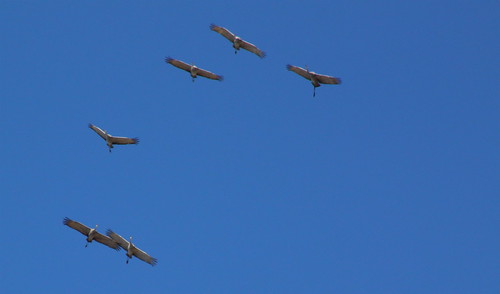
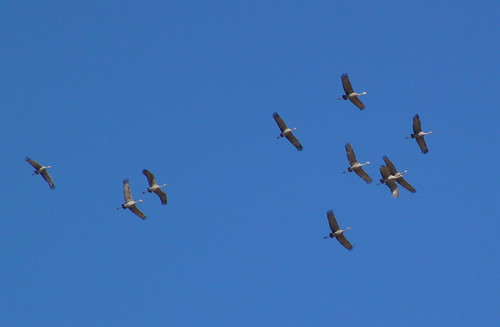
 Posted in:
Posted in: 


